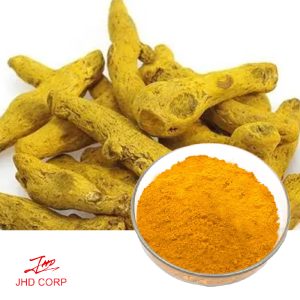
Chat With Us Contact Us Email Me
Hypericum perforatum (Scientific name: Hypericum perforatum L.) is a perennial herb of the genus Hypericum in the Gambogic family, with a height of up to cm and all hairless. Stem erect, much branched, leaves sessile, leaf blade elliptic to linear, apex obtuse, margin entire, dorsum, green above, white-green below, vein network sparse, inconspicuous. Cymes, borne at apex of stem and branches, bracts and bracteoles linear, sepals oblong or lanceolate, petals yellow, oblong or oblong-elliptic, unequal on both sides, stamens numerous, anthers yellow, ovary oval-shaped, capsules oblong-oval-shaped, seeds black brown, cylindrical, flowering in July-August, bearing in September-October.
Function:
1. St John's wort is widely known as an herbal treatment for depression. It is proposed that the mechanism of action of St. John's wort is due to the inhibition of reuptake of certain neurotransmitters.
2. St John's wort is also being studied for anxiety because, in some studies on depression, people taking St. John's wort also reported an improvement in anxiety.
3. St John’s wort has also been suggested as a possible treatment for OCD because the same medications (antidepressants) are often used for OCD, and because of promising results from a preliminary study. A later study on St. John's wort, however, didn’t find it more effective than a placebo for OCD.
4. Some alternative practitioners recommend St John's wort for ear pain due to an ear infection (otitis media).
5. St John's wort is being explored for smoking cessation. Although promising, well-designed studies are needed.
Application:
Add Popular Products to weekly line up























